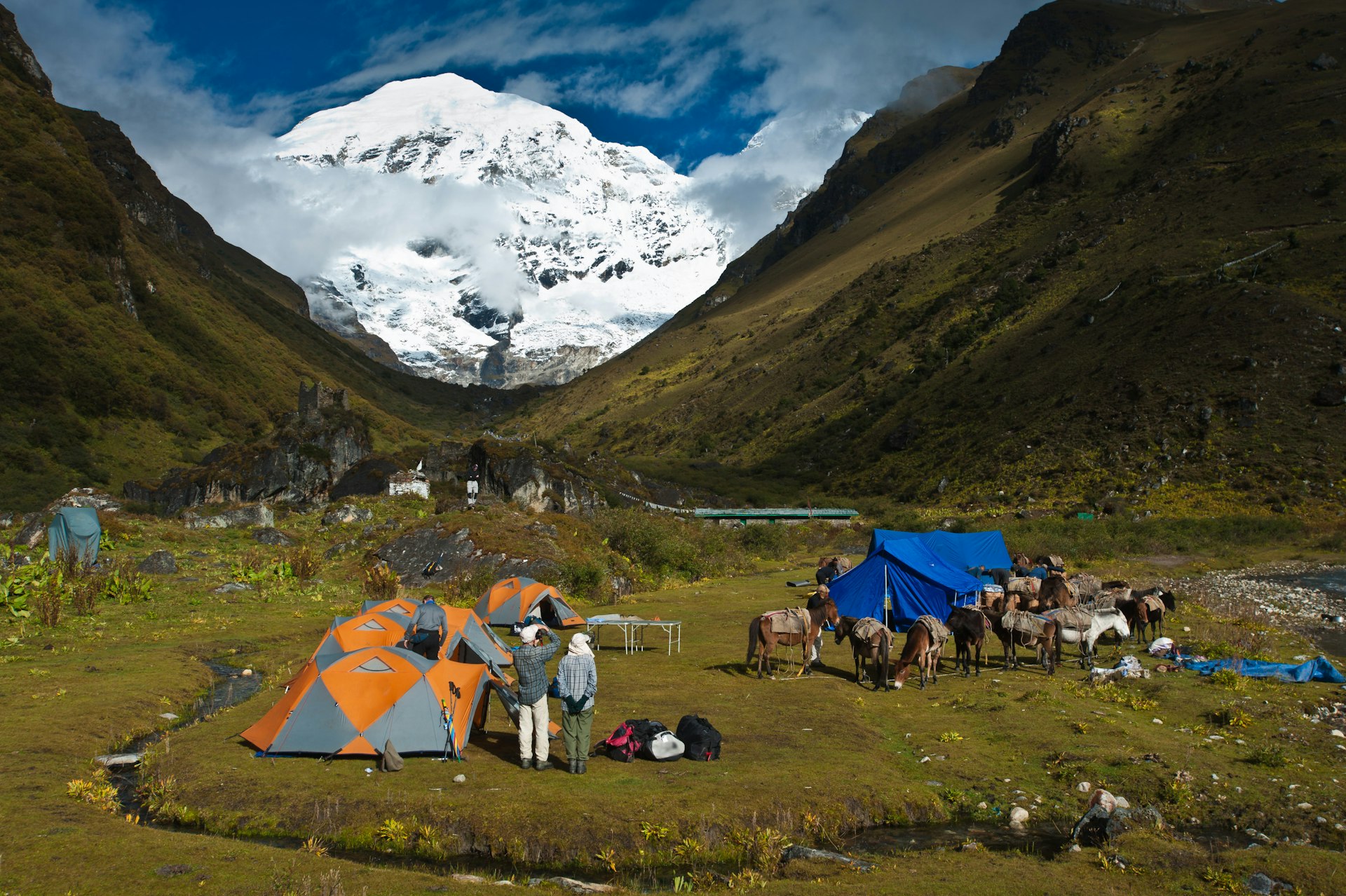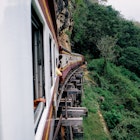Since tentatively opening up to tourism in 1974, the Himalayan kingdom of Bhutan has earned a reputation as one of the most pristine – and expensive – places to visit on the planet.
Tight controls on tourism and high daily tourist fees have helped to preserve a traditional Buddhist culture that is rapidly vanishing from other parts of the Himalayas. And in 2022, those fees climbed even higher, as Bhutan opened its borders to travelers following the pandemic.
Now, almost a year after this sudden price hike, the Bhutanese government has announced another shake-up to the daily tourist fees – but this time, fees are coming down significantly. For travelers deterred from visiting Bhutan’s ancient fortress monasteries and immaculate mountain valleys by the high price tag, this is welcome news, but what exactly are the new rules, and how do they affect travelers?
If Bhutan has long been on your bucket list and you’re ready to go, here’s what you need to know about the new fees, including what you will be charged for and where the money ends up.
What was the old system for visiting Bhutan?
Until 2022, tourists to Bhutan were charged a daily tourist fee of $250 ($200 in the low season) for every day spent in the country. This might sound expensive, but the fee covered food, accommodation, transport, guide fees and most of the other essentials tourists needed for a once-in-a-lifetime trip. Also included in the daily charge was a $65 Sustainable Development Fee, funding far-reaching social programs in a nation famed for measuring progress in terms of Gross National Happiness rather than Gross National Product.
In September 2022, Bhutan reopened to un-quarantined tourists for the first time since the start of the pandemic – but the Sustainable Development Fee increased to $200 per day, with additional charges for accommodation, food, transport, entry to sights and guides. Lower fees applied for tourists from neighboring India, but for most other visitors, the cost of travel to Bhutan doubled from an already high baseline.
For some, Bhutan was no longer a once-in-a-lifetime destination tantalizingly within reach, but an unattainable dream, particularly with the soaring cost of flights and the post-COVID-19 cost-of-living crisis. For a while, it seemed that Bhutan’s unique experiences would be reserved for the high-flying elite; Himalaya fans with smaller budgets folded away their maps of alpine valleys and prayer-flag-draped monasteries and looked elsewhere for their dose of mountain magic.
In fact, the blow was soon softened by a series of discounts offered to travelers staying more than four nights in Bhutan, with additional days exempt from the daily fee once visitors reached a certain threshold. But as of September 2023, cheaper – if not exactly cheap – travel to Bhutan is back in the cards. Here are the changes, and what they mean for travelers dreaming of Bhutan's pure mountain air and timeless Buddhist architecture.
Getting the best out of your trip to Bhutan

What is the new system starting in September 2023?
After increasing by 200% in 2022, the daily Sustainable Development Fee will be cut in half from September 1, 2023 to a more affordable US$100 per day. Children ages six to 12 will pay $50 per day, and there’s no fee for children age five or under. This is a significant price drop – but travelers will still have to budget for meals, transport, guide fees, entry charges at dzongs (fortress-monasteries) and museums, and hotels – which can cost anything from $40 per night for a budget hotel in the capital, Thimphu, to nearly $2000 per night for the lavish, palace-like Amankora Paro Lodge in Paro.
Then there are flights, with the trip from New York to Paro coming in at around $2000, transferring in either India or Nepal to a Bhutan-bound flight with Bhutan Airlines or Druk Air – the only airlines licensed to fly into the international airport at Paro. You should budget a minimum of $300 per day for a trip to Bhutan, and considerably more to stay in superior classes of hotel, in addition to the cost of your flights.
However, this high price tag gets you access to a destination only lightly touched by tourism. Only around 40,000 tourists visited Bhutan in the first six months after the country reopened following the pandemic, with more than half of these visitors coming from India. For comparison, Nepal received nearly 500,000 visitors over the same period, and India saw more than four million arrivals.
With the low visitor numbers, sights in Bhutan – such as the majestic dzongs in Paro, Thimphu and Punakha and the gravity-defying monastery at Taktshang – only become truly crowded when locals are gathering for one of the country’s colorful Buddhist festivals. While the influence of the modern world is creeping into Bhutan, particularly in Thimphu, your prevailing memories will be of peace, silence and clear mountain air scented by the aromatic resin of blue pines. For travelers seeking Shangri-La in real life, the experience is priceless.
Are there any changes for travelers from India, Bangladesh and Maldives?
Visitors from India, Bangladesh and Maldives are subject to different rules. Travelers from India, who make up 73% of all visitors to Bhutan, can visit with a special permit – available through the Bhutanese government’s visa portal – paying a low daily fee of ₹1200 (about $15). Bangladeshi and Maldivian citizens must apply for a visa, on top of the same special daily fee. No changes have been announced to this system.
In Bhutan, a historic Himalayan route opens to hikers for the first time in 60 years

What if I want to go trekking?
With its lofty Himalayan valleys and remote monasteries, Bhutan is a spectacular trekking destination, but the daily Sustainable Development Fee still applies. The most practical way to trek is to make arrangements through a Bhutanese tour operator, who will provide guides, support staff, pack animals, tent accommodation and meals for the duration of your trek.
With a support team to transport your bags and put up your tent and a hot breakfast waiting for you when you wake up every morning, the experience is more like glamping than wild camping, and the trails are delightfully uncrowded – particularly if you attempt more ambitious routes such as the 28-day Trans-Bhutan Trail. You’ll also get to meet local people following a traditional way of life, far from the tourist bustle.
What about my visa?
Applying for a visa for Bhutan is a little different from applying for a visa for most other countries. Visas are not issued by embassies overseas but are stamped into your passport on arrival, on production of a pre-approval letter confirming you have paid the daily tourist fees and the $40 visa-processing fee. The easiest way to obtain this letter is to make arrangements through an approved Bhutanese tour operator; you can also apply online via the government's visa portal (you’ll also need mandatory travel insurance for the duration of your trip).
Be aware that you will have to pay the Sustainable Development Fee for every day of your stay at the same time as you apply for your visa. Many travelers feel more comfortable applying through a tour agency, rather than making a payment of hundreds or even thousands of dollars via an online form. Using an agency will also allow you to talk through your itinerary with an experienced local expert. It’s the best way to ensure that you get maximum value from the daily fee (for instance, you don't want to squander $100 days backtracking to places you have already visited).
Getting the best out of your trip to Bhutan

Why has this decision been made now?
When the daily fee was increased in 2022, the government announced that funds raised would be used to offset the carbon footprint of tourism, reduce fossil-fuel dependency, improve carbon-neutral infrastructure and up-skill workers in Bhutan’s tourism sector, supporting Bhutan’s recovery from the pandemic.
However, in the first few months following the reopening, international visitor numbers fell markedly compared to before COVID-19, attributed to the new fee structure, worldwide inflation and economic uncertainty linked to the war in Ukraine. Nearly 60,000 people visited Bhutan from January to August 2023, compared to 315,600 travelers for the whole of 2019. The economic foundation of Bhutan’s “high value, low volume” tourism model no longer seemed quite so secure.
According to a government statement, the new fee reduction announced in 2023 reflects the “important role of the tourism sector in generating employment; earning foreign exchange; realizing the potential for spillover benefits for ancillary industries; and in boosting overall economic growth.”
Commenting on the change, Dorji Dhradhul, director general of the Department of Tourism Bhutan, said: “Amid the global recovery from the COVID-19 pandemic, ongoing European conflicts, and economic challenges affecting key markets, we’ve attentively considered feedback from our guests, industry peers and global travel partners."
"Consequently, we’ve decided to temporarily reduce our Sustainable Development Fee (SDF) to rejuvenate our tourism industry. This will not only make our nation more accessible to potential visitors but will also ensure sustained funding for the numerous projects supported by the SDF."
It’s a valid stance for the government to take. In 2019, the Sustainable Development Fee contributed nearly $89 million to the Bhutanese economy. During the eight months from January to August 2023, the Sustainable Development Fee delivered a more modest $13.5 million into the national coffers.
Another issue was the lack of warning provided by the authorities when Bhutan reopened to tourism after the pandemic. The government announced the doubling of the daily fee just weeks before the borders opened in September 2022 – for a destination where tourists typically spend up to six months planning a trip.
The current reduction in the daily fee has also been announced on short notice, but the lower rate will apply until August 31, 2027, giving tourists some certainty when planning ahead for a trip to Bhutan.
Escaping Thimphu: where to go to find Bhutan’s hidden treasures

Where will my money go?
Bhutan’s unique tourism model has delivered significant benefits for the people of this remote Himalayan kingdom. On top of free healthcare and education, the Sustainable Development Fee has funded everything from conservation to carbon-neutral infrastructure and organic farming. These projects have contributed to Bhutan becoming the first carbon-negative country on earth – actually absorbing more carbon dioxide than it produces.
What does sustainable development look like on the ground? With tourism reducing the pressure on agriculture to sustain the economy, Bhutan has managed to keep 71% of its territory under forest cover, compared to just 25% in Nepal and 11% in Bangladesh. Some 95% of Bhutan’s electricity is produced using hydropower, and almost 100% of the population has access to electricity and clean water.
In exchange for opening their mountain home to high-value, low-impact tourism, the Bhutanese have achieved a high standard of living compared to their neighbors. Bhutan spends nearly 40% more than Nepal on education, with half the unemployment rate and half as many people living under the poverty line. And the adult literacy rate is growing at 10% per year – not bad for a country where 61% of people live in remote mountain villages.
Bhutan is also famous for its Gross National Happiness – an innovative model for assessing the successes and achievements of Bhutan’s part-monarchy, part-clergy and part-elected government. Using such measures as job satisfaction, sense of community, psychological well-being and religious karma, Bhutan is rated as the happiest country in the world.
Know your gompas: a Lonely Planet guide to Tibetan Buddhist monasteries

So is Bhutan still worth visiting?
Of course! While visiting Bhutan will always be an expensive option, the lower daily fee makes travel here more affordable – just not quite as affordable as it was before the pandemic. In truth, Bhutan was always a plan-ahead-and-save-up kind of destination, and with the lower Sustainable Development Fee fixed until 2027, travelers have a clear target to aim for over the next four years.
Looking at things objectively, tourist fees are increasingly the future of travel. Barcelona has had a tourist tax since 2012, Thailand imposed a $9 tourist tax in 2022, Manchester introduced a daily tourist charge in 2023, and Venice and Valencia are poised to levy new tourist charges during the 2023–24 season. The primary difference in Bhutan is that you need slightly deeper pockets.
If the lower daily fee succeeds in luring more people to Bhutan, visitor numbers will still be small by international standards, and the government will have more funds for worthy social and environmental initiatives such as new hydropower projects and the electrification of public transport. In the future, that famously clean mountain air may become even cleaner and more keenly fragranced by the scent of glacial meltwater and blue pines.














